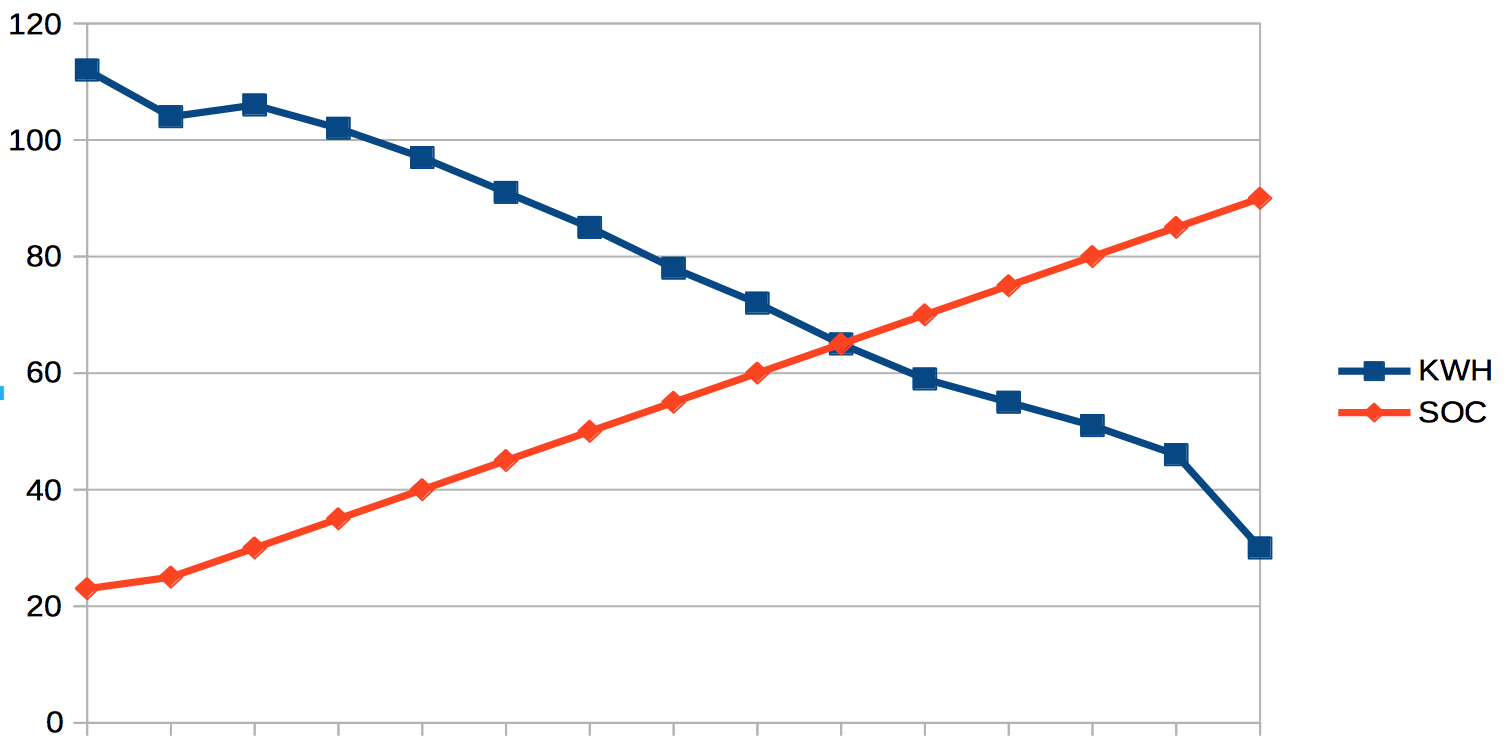My Model S is an 85D is running 2019.16.2
As an experiment I visited a Supercharger this morning and charged the car from 23% to 90% and tracked the charge rate for each 5% increase in SOC.
At the start of the charge session, the charge rate peaked at 112KWH but had dropped back to 105KWH within 2 minutes. Thereafter the charge rate drops in proportion to the increase in SOC. The cooling fan was working hard from the start of the charging session, but reduced in intensity once the charge rate dropped below 50KHW
The ambient temperature was 17C or 63F, and the car had been driven at highway speeds for 10 miles prior to charging.
The charge session took 41 minutes and added 47KWH of energy; taking the battery from a reported 23% to 90% SOC.
Using the back of an envelope, I calculate that the battery capacity is now 70KWH following the recent software updates, and that my available range at 90% SOC has dropped from 233 mile to 207 miles; effectively a 10% loss in range which is in line with what others are reporting.
While the graph doesn't appear to show a significant impact on charge rate, it's worth bearing in mind that 90% SOC now used to be just over 80% prior to the recent firmware updates, so to get to 233 miles of range would probably take another 25 minutes from the new 90% to the (new) 100%.
The remaining 25 miles of range that I used to have is currently unobtainable!

As an experiment I visited a Supercharger this morning and charged the car from 23% to 90% and tracked the charge rate for each 5% increase in SOC.
At the start of the charge session, the charge rate peaked at 112KWH but had dropped back to 105KWH within 2 minutes. Thereafter the charge rate drops in proportion to the increase in SOC. The cooling fan was working hard from the start of the charging session, but reduced in intensity once the charge rate dropped below 50KHW
The ambient temperature was 17C or 63F, and the car had been driven at highway speeds for 10 miles prior to charging.
The charge session took 41 minutes and added 47KWH of energy; taking the battery from a reported 23% to 90% SOC.
Using the back of an envelope, I calculate that the battery capacity is now 70KWH following the recent software updates, and that my available range at 90% SOC has dropped from 233 mile to 207 miles; effectively a 10% loss in range which is in line with what others are reporting.
While the graph doesn't appear to show a significant impact on charge rate, it's worth bearing in mind that 90% SOC now used to be just over 80% prior to the recent firmware updates, so to get to 233 miles of range would probably take another 25 minutes from the new 90% to the (new) 100%.
The remaining 25 miles of range that I used to have is currently unobtainable!



